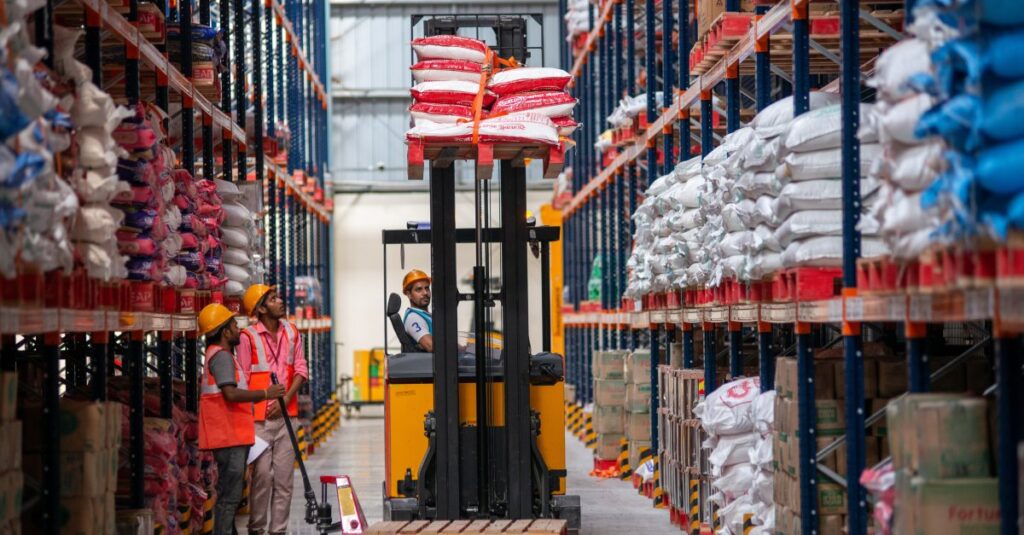In simple language, retail warehousing is an act of keeping large quantities of merchandise, goods & material for storage until they are required for general sale to the public. A retail warehouse is a place where goods from the manufacturer are stored to be sold and kept safely, securely. The most sought after coherent ERP Software is the connecting point between Head office, all warehouses & stores. The ERP system in retail warehouse is the most accurate method of calculating available stock, status of goods, quantities available with useful reports for management. The day to day functioning of the retail warehouse is monitored through ERP tracking system & communication between the retails warehouses.
Retail warehousing is an indispensable part of Logistics & Supply Chain Management. Predominantly retail warehouses set up a Central Warehouse with regional warehouses. These regional retail warehouses are stacked with stuff as per taste, preferences, color & weaving as choices differs geographically. Usually these goods are sold in large volumes at higher discounted prices than wholesalers or traditional markets.
Setting up a retail warehouse has a pre-requisite of certain space as it required to maintain stocking of all the merchandising. Preferably these warehouses are set up on the outskirts of the town due to space requirement, economical manpower & rentals. State of the art retail warehouses have mandate requirement of CCTV, smoke detectors, firefighting system, water supply, round the clock electricity etc with ample space for vehicle packing. Heavy duty racking system with conveyor belts are also placed in some hi-tech retail warehouses for handling materials. The warehouse must have space to accommodate dispatch office, administrative office and area for the drivers.
Retail warehousing has been categorized broadly on the basis of usage & storage scale. These warehouses are Private Warehouses, Consolidated Warehouses, and Distribution Centres. Large retail businesses, corporations, and companies have private warehouses to store their goods. These facilities, also known as proprietary warehousing, require upfront capital investment to build and maintain the retail warehouses. In regards to Consolidated warehouses (in other words also known as Public Warehouse) are owned and operated by third party businesses. These are rented out to the Corporates and establishments for storage & further distribution to retail network.
Buyer, usually a common man, whilst purchasing goods expects to get their product delivery promptly with high quality service. In case retail warehouse management is not maintained accurately, the store tends to loose on their sales revenue. The scarcity of merchandise happens only at a point of limited storage capacity.
Usual challenges faced by Retail Warehousing are numerous from documentation to the critical task of ensuring that all products arrive safely. First & foremost is the set up cost of a retail warehouse with day to today expenses prevents retails to open such kind of warehouse. This inability induces retailers to rent public / common warehouses. However, with limited usage control & frequent transactions acts as a hindrance factor. If these third party logistic warehouses are professionally managed & technology oriented, they can manage the storage handling process efficiently. If this target is achieved, the retail warehousing performance can be smooth & bring a lot of benefits to the retailers. Several few brands have set up their own warehousing facilities which proves to be a viable option for them. These retail warehouses are in direct supervision of the company.
Stock visibility is maintenance of an accurate inventory count to track the stock in real time. This is an excellent tool in giving customers an omni-channel shopping experience. It is significant to gain insight into quantity, location of inventory & arrival/exit time which allows to plan & analyse the goods in stock to manage stock better.
It is of utmost importance to manage supply chain complexities due to high customer expectations, tailored made experiences & wide range of products for customer shopping delight. However, retail warehousing & supply chain management can be complex in way of miscommunication, dishonest staff, poor work ethics, unclear organisational benefits and lack of motivation. These factors can lead to stagnancy in retail warehousing. Therefore, alternative measures of complexities give birth to innovation & technology driven proceedings.
Future of retail warehousing
From past several years, retail warehousing played a key role in supply chain & distribution process. Several changes in warehousing structure, size, designing & lay out has been witnessed as warehousing space multi folded in a span some years only. The warehouse industry has come a long way from godowns and mismanaged empty spaces to become the backbone of the manufacturing and growing e-commerce industry as a part of retail warehousing.

